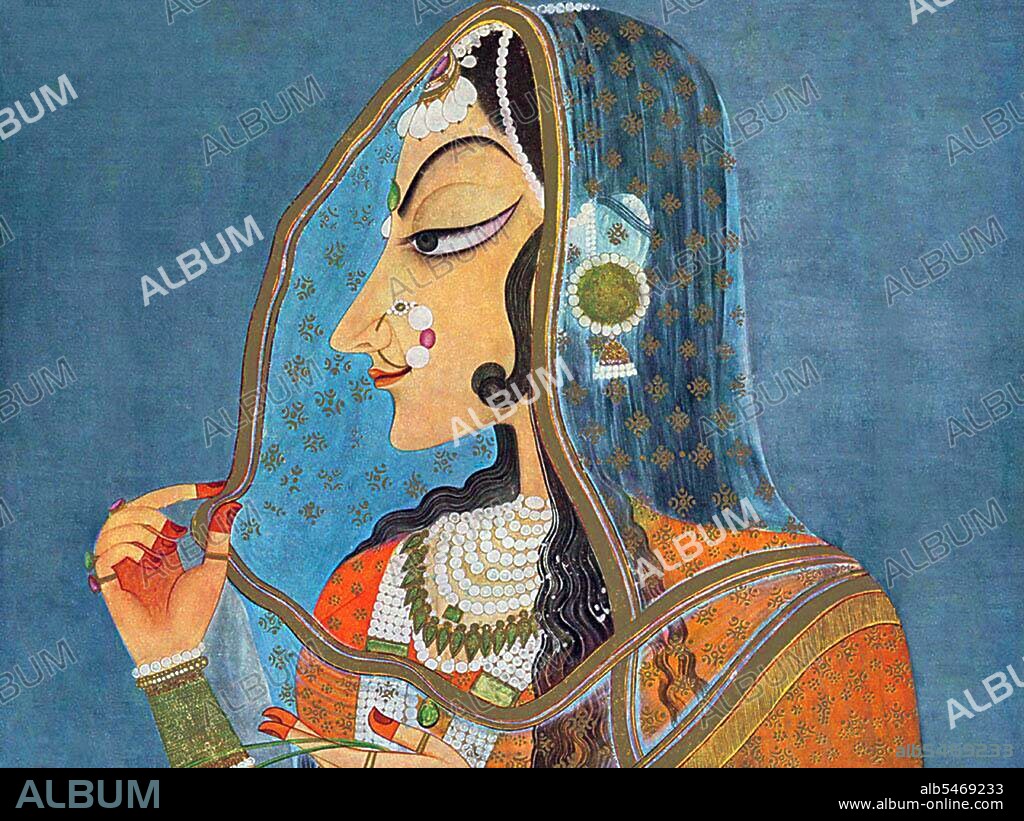alb5469233
India: Bani Thani, 'Lady of Fashion', a famous Rajasthani painting of the Kishangarh school sometimes called 'India's Mona Lisa' (18th-19th century)

|
Ajouter à une autre Lightbox |
|
Ajouter à une autre Lightbox |



Avez-vous déjà un compte? S'identifier
Vous n'avez pas de compte ? S'inscrire
Acheter cette image.
Sélectionnez l'usage:

Titre:
India: Bani Thani, 'Lady of Fashion', a famous Rajasthani painting of the Kishangarh school sometimes called 'India's Mona Lisa' (18th-19th century)
Légende:
Voir la traduction automatique
Kishangarh Painting emerged as a distinctive style in the middle of 18th century under the patronage of Maharaja Sawant Singh. Nihal Chand, a gifted artist in the Maharaja's court, produced some highly individualistic and sophisticated works. The chief characteristics of the Kishengarh paintings were the elongation of human faces, lavish use of green and depiction of panoramic landscapes. Portrayal of Radha and Krishna in elongated faces is a common subject of Kishangarh paintings. The elongated neck, the long stylised eyes with drooping eyelids, the thin lips and pointed chin of Radha standing in a graceful pose with her head covered with a muslin odhni, is undoubtedly the most striking creation of the Kishangarh school. This style continued into the 19th century and a series of paintings of the Gita Govinda were produced in 1820. The most famous Kishangarh painting is called Bani Thani. The Indian government has used it on a postal stamp. The Bani Thani style of painting got its name from a story with a twist of romance to it. In the Kishangarh court during the 18th century there ruled a poet-king called Raja Samant Singh (1699–1764) who had eyes only for Bani Thani, a court singer and poet. Bani Thani’s eyes were what drew Samant Singh to her, and so did her singing. Seeing Bani Thani singing in his court each day helped the king’s heart grow fonder. Now Samant Singh wrote poetry under the name of Nagari Das, and since Bani Thani was a poet in her own right too, love was not far behind.
.
.
Crédit:
Album / Pictures From History/Universal Images Group
Autorisations:
Modèle: Non - Propriété: Non
Questions sur les droits?
Questions sur les droits?
Taille de l'image:
4800 x 3600 px | 49.4 MB
Taille d'impression:
40.6 x 30.5 cm | 16.0 x 12.0 in (300 dpi)
Mots clés:
ART (CATÉGORIE) • ART • ART, PEINTURE • ASIE • ASIE, CONTINENT • CONTINENT ASIE • HISOIRE • HISTOIRE • INDE • INDES • INDIEN • INDIENNE • INDIENS • PEINTURE • PORTAIT • PORTRAIT • POTRAIT • TABLEAU • TABLEAUX
 Pinterest
Pinterest Twitter
Twitter Facebook
Facebook Copier le lien
Copier le lien Email
Email
